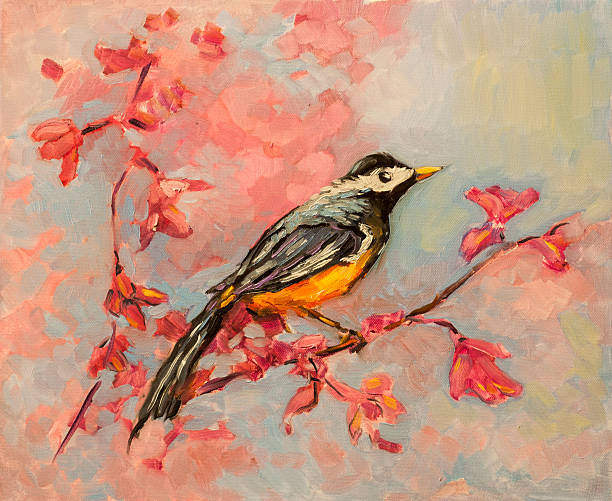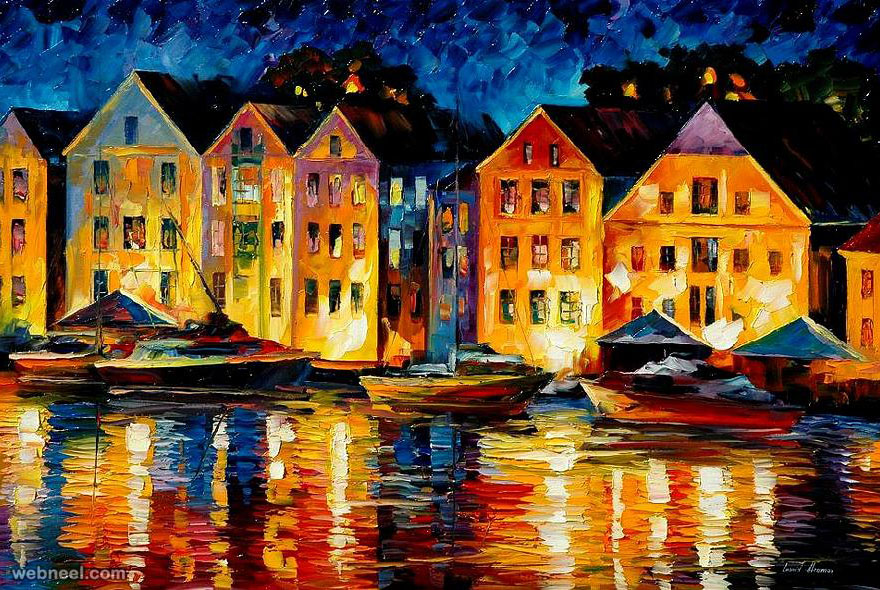Nontraditional and Modern Oil Paintings for Sale
Nontraditional and Modern Oil Paintings for Sale
Blog Article
Exploring All Concerning Oil Paints: An Overview to Comprehending Their Charm and Value
Oil paintings have actually astounded target markets for centuries, using a look into the artistic proficiency of numerous ages. Their rich background is linked with cutting-edge methods and profound emotional expression. Recognizing the products and methods behind these artworks can boost recognition. In addition, the market for oil paints presents opportunities for financiers and collectors alike. As one discovers this remarkable world, the question emerges: what makes an oil paint absolutely valuable?
The Background of Oil Painting: A Trip With Time
Although oil paint has origins that date back to ancient times, it truly prospered during the Renaissance, when artists uncovered its flexibility and rich color potential. Early instances can be traced to the 7th century, with strategies progressing notably across societies. The medium became noticeable in Northern Europe in the 15th century, particularly via the works of artists like Jan van Eyck, that originated its usage for comprehensive realism and vivid shades. This period noted a separation from tempera paints, enabling better deepness and texture. As oil painting spread, it affected countless artists, causing masterpieces by popular numbers such as Leonardo da Vinci and Rembrandt. The tool's legacy continues, forming the art globe well right into modern times.
Recognizing Oil Paints: Materials and Techniques
As artists check out the globe of oil paints, they run into a varied range of materials and methods that specify this tool. The key parts of oil paint consist of pigments, which provide color, and drying oils, such as linseed, that bind the pigments and facilitate application. Various additives can customize the paint's structure and drying out time, boosting flexibility. Methods like glazing, where transparent layers are accumulated, and impasto, which entails using thick paint, enable various aesthetic results. Additionally, making use of brushes, palette knives, and even fingers can create distinct structures and surfaces. Comprehending these methods and materials enables musicians to completely reveal their imagination and accomplish the preferred impact in their artwork.
The Duty of Shade in Oil Paints
Shade plays an essential function in oil paints, affecting both visual allure and emotional resonance. Recognizing color theory basics, including the connections between tones, can improve an artist's capacity to communicate mood and atmosphere. In addition, grasping color mixing methods enables higher depth and splendor in a paint's combination.

Color Theory Fundamentals
Recognizing color theory is important for artists collaborating with oil paints, as it develops the foundation for producing harmonious and aesthetically appealing make-ups. Color concept includes the research study of how colors interact, the shade wheel, and the relationships in between main, additional, and tertiary colors. Musicians utilize corresponding colors to boost contrasts and create focal factors, while comparable shades promote unity and cohesiveness within an item. Additionally, the principles of warm and awesome colors affect the understanding of depth and area in a painting. Understanding these principles allows musicians to control shade properly, directing the visitor's eye and communicating their designated message. Proficiency of color theory ultimately enhances a musician's ability to communicate feelings and ideas with their job.
Psychological Effect of Shade
The emotional effect of color in oil paints plays an important role in exactly how viewers view and connect with artwork. Shades evoke details feelings and state of minds, influencing the customer's psychological state. Cozy shades like oranges and reds can develop a sense of warmth and power, while cool tones such as blues and eco-friendlies usually evoke calmness or self-questioning. Artists purposefully choose color combinations to boost narrative components, guiding the audience's psychological trip. The saturation and contrast of colors even more magnify these results, drawing attention and producing focus. Inevitably, the interaction of colors in oil paintings not only boosts their visual allure yet also offers as an effective tool for psychological expression, improving the visitor's experience and interpretation.
Shade Mixing Techniques
While many facets of oil paint add to the overall structure, mastering shade mixing techniques is necessary for attaining desired results and deepness. Shade mixing can be come close to via various methods, consisting of the additive and subtractive processes. Additive mixing entails incorporating shades of light, while subtractive mixing counts on pigments, where shades blend to develop new shades. Musicians commonly make use of a minimal combination to develop harmonious jobs, recognizing the connections in between key, additional, and tertiary shades. Methods such as glazing and scumbling even more enhance deepness and brightness. By skillfully blending colors, a musician can evoke emotions, develop focal factors, and accomplish a sense of realism, inevitably elevating the paint's emotional and visual effect.
Famous Oil Painters and Their Iconic Works

Well known for their mastery of shade and strategy, oil painters have created a few of the most celebrated artworks in history. Popular artists like Vincent van Gogh mesmerized target markets with his emotive brushwork in "Starry Night," while Claude Monet's "Perception, Daybreak" laid the foundation for Impressionism. Leonardo da Vinci's "Mona Lisa" continues to be a long-lasting icon of imaginative wizard, showcasing his ability in recording human expression. Rembrandt's "The Night Watch" shows his cutting-edge usage of light and shadow. Other noteworthy figures consist of Pablo Picasso, that revolutionized modern art with his vibrant experimentation in works like "Les Demoiselles d'Avignon," and Georgia O'Keeffe, whose lively representations of landscapes and blossoms aided specify American innovation. Each musician's one-of-a-kind design contributed considerably to the oil painting landscape.
Exactly how to Assess the Top Quality of an Oil Paint
Evaluating the top quality of an oil paint involves a careful analysis of workmanship techniques, as well as an evaluation of color and composition. Observing brushwork, layering, and the application of paint can disclose the musician's ability level. Furthermore, the interaction of shades and the general plan of aspects contribute considerably to the painting's aesthetic worth.
Analyzing Workmanship Methods
A careful evaluation of workmanship techniques is important for identifying the quality of an oil paint. Evaluators should first take a look at the application of paint; thick, textured brushstrokes might suggest a competent hand, while overly uniform applications can indicate an absence of depth. oil paintings for sale. The layering technique is also important; the existence of glazes and differed thickness can improve luminosity and intricacy. Furthermore, the top quality of the materials utilized, such as the canvas and pigments, plays a considerable duty in toughness and total aesthetic. Focus to detail in aspects like sides and shifts between colors mirrors the musician's dedication to their craft. Ultimately, these methods add to the painting's psychological effect and market price, acting as signs of the musician's ability and intent
Analyzing Color and Structure
While examining the top quality of an oil painting, one should concentrate on the interaction of color and composition, as these aspects are essential to the art work's total effect. Color options can develop and stimulate feelings mood; consequently, the artist's combination should be checked out for harmony and contrast. A healthy composition directs the customer's eye and creates a sense of unity. Artists frequently utilize methods like the guideline of thirds or leading lines to improve visual interest. Furthermore, making use of light and shadow can add depth, enhancing the three-dimensionality of the painting. Ultimately, a successful oil paint weds shade and make-up, engaging the customer and welcoming a much deeper appreciation of the artist's vision and method.
Caring for and Preserving Oil Paintings
Appropriate treatment and conservation of oil paints is essential for maintaining their integrity and longevity. To secure these art work, it is essential to present them far from straight sunshine, which can create fading and staining. Keeping a secure setting with regulated temperature level and moisture additional aids in preventing damages. Cleaning up ought to be done gently making use of a soft, dry cloth, staying clear of any type of severe chemicals that could hurt the paint or varnish. Routine evaluations for signs of wear and tear, such as flaking or breaking, are recommended. When storing or transferring oil paintings, correct extra padding and framing are essential to prevent physical injury. Eventually, attentive care adds to the visual allure and value of oil paints over time.
The Marketplace for Oil Paintings: Accumulating and Spending
Understanding the market dynamics for oil paints is vital for collectors and capitalists alike. The worth of these artworks is affected by numerous aspects, including the musician's credibility, historical importance, and existing fads. Enthusiasts commonly look for pieces that reverberate personally while thinking about potential recognition in worth. Galleries and public auctions work as primary locations for acquiring and marketing, with prices varying based upon need and rarity. Spending in oil paints needs study right into the marketplace, as well as an understanding of authenticity and provenance. Furthermore, arising artists might use possibilities for substantial returns, while developed names can regulate high costs. Overall, a calculated technique to accumulating can generate both visual enjoyment and economic incentives.

Often Asked Inquiries
What Are the Environmental Effects of Oil Paint Materials?
The ecological influences of oil paint materials include the release of unstable organic compounds (VOCs), unsafe waste generation, and source extraction for pigments. These factors add to contamination and environmental deterioration, elevating problems amongst environmentally conscious artists and consumers.
How Do Different Canvases Impact Oil Painting Results?
Different canvases influence oil painting results significantly. Absorbency, texture, and surface high quality can change paint application, drying times, and color vibrancy. Artists frequently choose specific canvases to achieve wanted results and improve their creative expression.
Can Oil Paintings Be Brought Back if Damaged?
If harmed, Oil paints can certainly be restored. Professional conservators make use of here numerous methods to fix tears, clean surface areas, and address staining, guaranteeing that the artwork preserves its original beauty and worth for future generations.
What Are the Indications of an Original Oil Paint?
The indications of an original oil paint include visible brush strokes, appearance variations, and an uneven canvas weave (oil paintings for sale). In addition, credibility may be confirmed via provenance, trademarks, and the presence of a varnish layer special to oil tools
Just How Has Modern Technology Influenced Modern Oil Painting Techniques?
Technology has considerably influenced contemporary oil paint methods by presenting digital tools for preparation, improved materials for texture and long life, and on the internet platforms for sharing and marketing art, therefore broadening musicians' innovative opportunities and audience reach. Oil paint has origins that date back to old times, it really grew throughout the Renaissance, when musicians discovered its convenience and rich color possibility. The emotional effect of shade in oil paintings plays a crucial function in just how audiences attach and view with art work. While lots of elements of oil painting contribute to the general make-up, mastering color mixing methods is crucial for accomplishing desired results and depth. Evaluating the top quality of an oil paint involves a mindful assessment of workmanship strategies, as well as an analysis of color and structure. While examining the top quality of an oil paint, one must focus on the interplay of color and make-up, as these elements are fundamental to the artwork's general effect.
Report this page